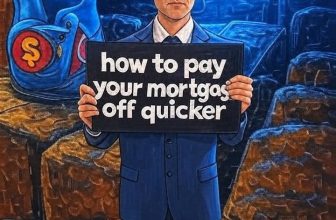(August 30, 2022)
Today’s interest rate environment brings new meaning to the term sticker shock. Not long ago, you were able to sign up for a mortgage in the low 2’s and before that, interest rates plummeted as low as 0.99% for some select variable rate mortgages. Well…those days are well behind us.
In a span of about 6 months, interest rates essentially doubled! Prime rate spiked up from 2.45% to today’s rate of 4.70%, and the 5 year fixed rate jumped pretty much the same interval from 2.39% to ~5.34%. And according to various other economists, brace yourself for more rises to round out the year.
So, where do we go from here? How is one to prepare for the payment shock that’s to come on fast approaching maturity dates in 2022? Or how about current variable rate holders who are experiencing the volatility in real time?
Whichever predicament you find yourself in, know this: THERE ARE OPTIONS and SOLUTIONS to HELP MINIMIZE the PAYMENT SHOCK…and in many instances, you will be surprised that renewing into to today’s higher interest rates may not be so bad after all…you may even end up with a lower payment than what you initially had with your lower rate! …more on this later. But first, let’s talk about product and term selection for your upcoming mortgage renewal.
Here are some outside the box approaches to consider when your mortgage comes due:
- If you think that there is still some volatility ahead with interest rates and inflationary pressures, here is an approach to consider -> Renew into a 1 year discounted rate and at the same time, take the opportunity to consolidate any existing debt you may have (if need be). This allows you to rest easy with a fixed payment while analyzing the market trend in time for your next term selection. For example, rather than locking in to a 5yr fixed rate at 5.29% (today, August 2022), secure a 1 yr fixed at 4.09% with the hope that longer term interest rates will have stabilized and improved by the time your maturity rolls around in 12 months.
- If you are of the mind set that the worst of inflation and rate hiking is behind us, then consider this approach -> secure a variable rate mortgage with a fixed payment feature. This will give you the flexibility to ride out any remaining rate increases without increases to your payment (unless rates unexpectedly continue to trend upwards in an aggressive manner which would thereby trigger the built-in payment reset for your mortgage…payments are fixed, but only to an extent). This strategy would also allow you to ride out the stabilization period with flexibility. As with all variable rate mortgages, you are able to convert to a fixed rate at any time without triggering a break penalty. In the event you need to sell your property, the variable rate mortgage calculates the smallest break penalty of all mortgage terms. Rather than having the potential of paying on the interest rate differential, variable rate mortgage break penalties are calculated based on a simple 3 months interest formula. This eliminates any possibility of a dreaded interest rate differential penalty which has the potential to be astonishingly substantial.
- And finally, if you believe rate hikes still have a way to go then look to lock in to longer terms (2-4 year terms). Before deciding on the term length, consider the potential for any life events that may force you to consider a refinance or sell the property ahead of your maturity (change in marital status, change in employment status, having children, university tuition, etc). Disclose potential events that may occur in the future to your mortgage broker and engage in a conversation to discuss scenarios and outcomes before proceeding with a longer term mortgage.
And lastly, here is a direct measure that you can initiate with your next mortgage term that could provide immediate relief to your monthly payment in the event you required it:
- Reset your mortgage to the maximum allowable amortization. For example, let’s say your current mortgage of $500,000 is coming due and your current rate is 2.69% with a monthly payment of $2,285. Rather than opting for the lender’s preferred renewal rate at 4.59%* which would initiate monthly payments over the remaining amortization period of 20 years, consider resetting the amortization to the maximum allowable limit of 30 years. Here is the difference:
- Proceed with the lenders preferred rate of 4.59%* and maintain the current amortization of 20 years: $2,212/m, or
- Request an amortization reset to 30 years and significantly reduce your payment to $1,820month**
- *4.59% is a transfer rate. This means that you are simply transferring the mortgage to a new term and maintaining all original parameters of the existing mortgage (maintaining the same amortization, no debt consolidation, maintaining the same applicants, etc)
- **5.19% is a refinance rate. This means you are making changes to the original mortgage parameters (changing the amortization, consolidating debt, etc). Therefore, this results in a rate increase.
- Maintaining your current amortization is naturally the preferred pathway, but if you are at a time in your life where your monthly cash flow has reached a critical juncture, then take advantage of the extended amortization. Once things improve with your finances, simply increase your payments and get back on path to a lower amortization (lenders allow for annual payment increases and lump sum limits without incurring any penalty)
RELATED ARTICLES:
The Secret to Renewing your mortgage
Implications of adding someone to your mortgage refinance
Contact Marko, he’s a Mortgage Broker!
604-800-9593 cell/text/WhatsApp | Vancouver (Click Here to schedule a call with Marko!)
403-606-3751 cell only | Calgary (Click Here to schedule a call with Marko!)
Email Me: gelo.m@mortgagecentre.com
@markogelo (Twitter)





